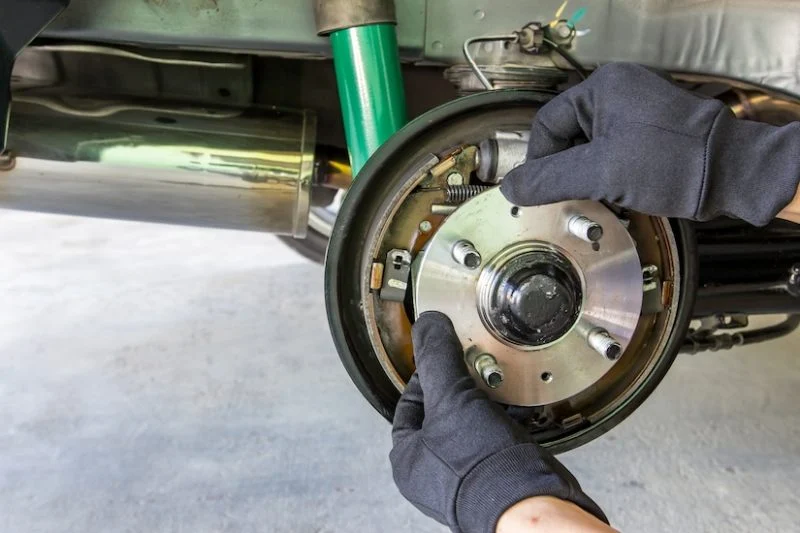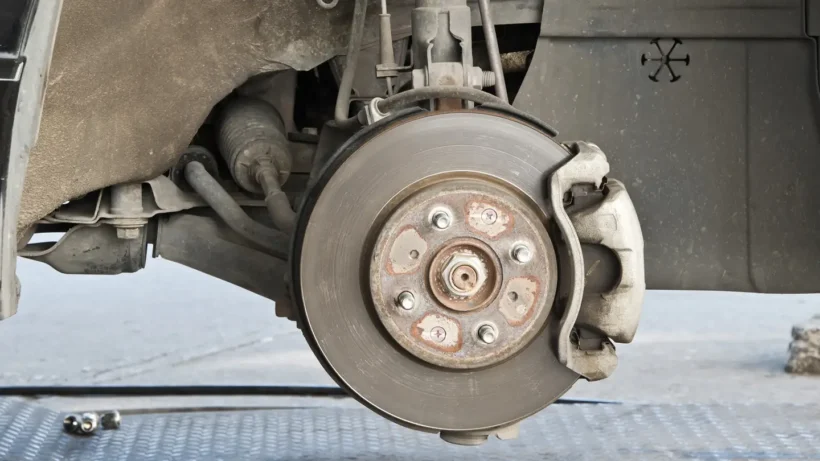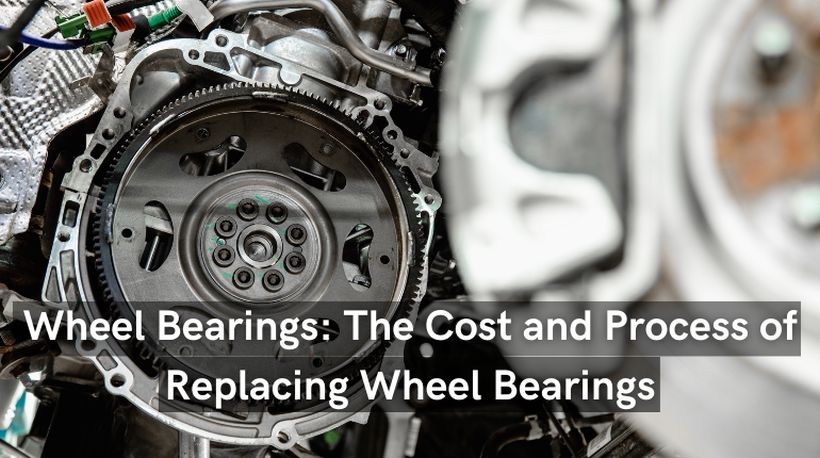Wheel bearings may not be the most glamorous part of a vehicle, but they play a critical role in ensuring your safety while on the road. These unsung heroes are responsible for the smooth rotation of your wheels, allowing your vehicle to move efficiently. In this article, we’ll delve into the function of bearings and why they are vital for vehicle safety.
Signs of a Faulty Wheel Bearing and When to Consider Replacement

Here are common symptoms of a worn-out wheel bearing and when to consider replacement:
- Unusual Noise: A prominent sign is a persistent, growling or rumbling noise that increases with vehicle speed. It often sounds like a cyclic, rotational noise, which may change pitch during turns. This noise is more noticeable when the faulty wheel is under load, such as when turning or carrying extra weight.
- Vibration and Wobble: Worn bearings can cause vibrations or wobbling in the vehicle. These vibrations often increase with speed and may be felt through entire vehicle.
- Looseness or Play: If you lift the vehicle and firmly grasp the tire at the 12 and 6 o’clock positions and rock it back and forth, you may feel play or looseness in the wheel.
- Uneven Tire Wear: A malfunctioning bearing can result in uneven tire wear, as it affects the alignment and stability. Inspect your tires for irregular wear patterns, and if you notice any, it could be a sign of a bearing issue.
When to Consider Replacement:
- Persistent Noise: If you hear unusual noises coming from the wheels, especially a growling or rumbling noise, it’s important to address this promptly. The noise is likely an indication of a worn-out wheel bearing.
- Vibrations and Wobble: Vibrations or wobbling can be both uncomfortable and unsafe. If you experience these symptoms, it’s best to have the wheel bearing inspected and replaced if necessary.
- Play or Looseness: If you notice play or looseness when checking the tire for movement, it’s a clear sign that the bearing is not functioning correctly. In such cases, replacement is recommended.
- Uneven Tire Wear: Uneven tire wear can lead to decreased tire performance and potentially reduce safety. If your tires are wearing unevenly, consider having the wheel bearing checked and replaced.
- Routine Maintenance: If your vehicle has high mileage, it’s a good practice to include wheel bearing inspection as part of your routine maintenance. While they don’t need frequent replacement, they can wear out over time, so regular checks can help identify issues before they become severe.
The Cost Factors Involved in Replacing

When it comes to vehicle maintenance, cost is often a significant concern. In this section, we’ll break down the expenses associated with wheel bearing replacement. You’ll discover the pricing for new wheel bearings, the labor costs for the replacement process, and various factors that can influence the overall cost. Understanding these financial aspects can help you make informed decisions about your vehicle’s maintenance.
The Step-by-Step Process
Here, we outline the key steps involved in replacing a wheel bearing.
Step 1: Prepare Your Workspace
Before you begin, ensure you have a safe and well-lit workspace. Gather the necessary tools and equipment, which typically include a jack, jack stands, lug wrench, and a socket set. Safety glasses and gloves are also advisable.
Step 2: Lift the Vehicle
Using the jack, carefully lift the vehicle off the ground and secure it with jack stands. Ensure the vehicle is stable and won’t shift during the repair process.
Step 3: Remove the Tire and Brake Assembly
Using the lug wrench, remove the tire assembly. Set it aside for later reassembly. Next, remove the brake caliper and rotor. This usually involves removing the caliper mounting bolts and sliding the caliper off the rotor. Hang the caliper from a suspension component using a wire hanger to avoid straining the brake line.
Step 4: Disassemble the Hub Assembly
Now, you’ll need to access the wheel bearing, which is located within the wheel hub assembly. The process may vary depending on the vehicle’s make and model, but generally, you’ll need to:
- Remove the axle nut: This holds the axle to the hub assembly.
- Disconnect any ABS sensors or wires.
- Remove the hub assembly mounting bolts.
Step 5: Remove the Old Wheel Bearing
Depending on your vehicle, the wheel bearing may be secured with bolts, clips, or press-fit. Carefully remove the old wheel bearing, taking care not to damage the hub assembly.
Step 6: Install the New Bearing
Carefully install the new wheel bearing into the hub assembly. Ensure it fits securely and aligns properly.
Step 7: Reassemble the Wheel Hub Assembly
Reassemble the hub assembly by reversing the steps you followed to disassemble it. This includes:
- Reattaching the hub assembly to the steering knuckle.
- Reconnecting any ABS sensors or wires.
- Reinstalling the axle nut.
Step 8: Reattach the Brake Assembly
Reattach the brake rotor and caliper. Make sure the caliper is properly aligned and secured. Torque the caliper mounting bolts to the manufacturer’s specifications.
Step 9: Replace the Tire and Lower the Vehicle
Reattach the tire and lower the vehicle back to the ground using the jack.
Step 10: Test and Torque
Before hitting the road, test the vehicle to ensure the wheel bearing replacement was successful. Take it for a short drive, listening for any unusual noises. Afterward, double-check that all bolts and nuts are properly torqued to the manufacturer’s specifications.
Remember, if you’re not confident in your ability to replace a wheel bearing, it’s always best to consult a professional mechanic who can ensure the job is done correctly and safely.
Choosing the One for Your Vehicle: Quality and Compatibility Matters
Selecting the right wheel bearings is crucial. We’ll explain why the quality of these components matters, and how compatibility with your vehicle’s make and model is essential for a successful replacement. Making the right choice here can extend the lifespan of your wheel bearings and enhance your driving experience.
Conclusion: Investing in Proper Maintenance and Replacement Helps Ensure Safe Driving with Functioning Wheel Bearings

In conclusion, wheel bearings may be small in size, but they have a big impact on your vehicle’s safety and performance. Regular maintenance and prompt replacement when needed can make all the difference in ensuring your safety while on the road. By understanding the function, signs of wear, costs, and replacement process, you can make informed decisions that lead to safer and more efficient driving.

